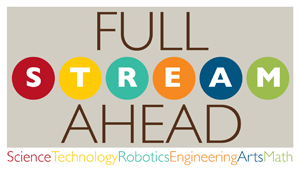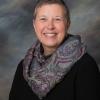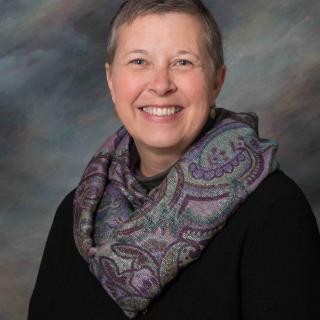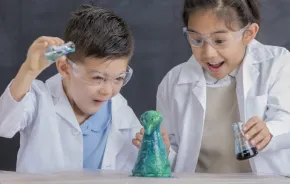
Ninety-seven percent of climate scientists agree: Our world’s warming climate is a result of human activities. And yet we live in a world where governments tell scientists to withhold taxpayer-funded climate change research results from the public, websites such as that of the Environmental Protection Agency (EPA) avoid any mention of climate science and a world leader calls climate change a “hoax invented by the Chinese.”
No wonder our science teachers don’t know what to teach.
Not on the radar
Then, four years ago, a little something called the Next Generation Science Standards (NGSS) came along. Led by state governors in consultation with the National Research Council, the National Science Teachers Association and the American Association for the Advancement of Science, the NGSS established specific guidelines for students studying science.
According to the NGSS, students needed to graduate from high school knowing how to construct explanations, evaluate solutions, analyze data and use computational representations based on scientific evidence — all measures that scientists themselves perform during experiments.
 States can decide whether or not to adopt or adapt the NGSS, or they can simply write their own standards. The standards are offered as a tool for states to use, but are neither affiliated with nor enforced by the federal government.
States can decide whether or not to adopt or adapt the NGSS, or they can simply write their own standards. The standards are offered as a tool for states to use, but are neither affiliated with nor enforced by the federal government.
To date, only 19 states — including Washington — have adopted NGSS, while other states, including Idaho, Wyoming and Oklahoma, have removed or altered the language regarding climate change being caused by human activity, which means a kid in Washington might take a science class radically different from the same class taught elsewhere in the country, and that teachers, no matter where they are, often hesitate to teach hot-button topics like climate change.
“[Climate science] is the most important subject to be teaching,” says Noam Gundle, a science teacher at the Ballard Maritime Academy in Seattle. “We are in a crisis, and students need to know what is causing it, what we can do about it and the news about it.”
But that conclusion is, perhaps not surprisingly, highly political.
There’s history here. In 1926, Tennessee schoolteacher John Scopes was convicted of violating Tennessee’s Butler Act — legislation that barred the teaching of evolution in any state-funded school. While the Scopes trial may sound like old news, it’s not; numerous school districts continue to teach creationism, and states like Scopes’ Tennessee permit teachers to teach “scientific strengths and scientific weaknesses” of theories that “cause controversy,” including evolution, climate change and global warming.
What’s the big deal?
According to the American Geosciences Institute, fewer than a quarter of high school students receive instruction in earth science (compare this to the approximately 91–94 percent of high school students enrolled in biology). On the rare occasion when climate science is mentioned, three out of four science teachers only address it for one to two hours, according to a 2016 study published in Science.
Even then, the lesson is often a confusing one, says Mark McCaffrey, an author of the study and founder of the Climate Literacy and Energy Awareness Network (CLEAN). A third of students get mixed messages from their teachers on how serious it is, McCaffrey says. Often, he notes, climate science is being squeezed into the curriculum and being taught almost in passing.
There are plenty of reasons why that is happening. For one thing, when teachers who currently teach science got their degrees, most teacher education departments weren’t teaching climate science. It was an emerging field, and much of the research-based knowledge we have now — for example, that the global temperature has increased 1.7 degrees Fahrenheit since 1880, according to NASA — hadn’t been widely publicized or, in some cases, even discovered.
“The biggest challenge that many teachers face is bringing themselves up to speed on the science,” says David Evans, Ph.D., executive director of the National Science Teachers Association. Still, Evans is optimistic. The teaching community is strongly supportive of learning and teaching this science, he says.
Compounding the issue is a lack of space for climate science in a teacher’s set curriculum. Oftentimes, subjects that students will be tested on — physics or biology, for example — have pushed climate science out. It’s simply not a priority among so many other priorities.
That said, there is one course that does consistently cover climate science: Advanced Placement (AP) Environmental Science. Nearly 98,000 students took the AP Environmental Science Exam in 2013 — up from the 79,738 students who took the exam in 2011, according to a 2014 report from CollegeBoard, the organization that administers AP exams. Still, that’s 98,000 compared to the more than 162,000 students who took the AP Biology Exam in 2013.
Science teacher Aaron Butler of Capital High School in Boise, Idaho, spends “a significant portion” of his AP Environmental Science course on climate change and the evidence behind it. The reason for this is simple, he says: “We spend 99 percent of our time on evidence-based science.”
In the back of my mind is always the worry that I will be confronted by a parent that sees this issue solely as a political issue.
But Butler lives in a state that, as of February, removed climate change language from its version of the NGSS. With that change, his students now learn lessons that are much different than those even students in neighboring schools might be taught. Plus, there’s always the threat of controversy, says Butler.
“It’s a tough topic to teach,” he says. “In the back of my mind is always the worry that I will be confronted by a parent that sees this issue solely as a political issue.”
Walking a fine line
Many science teachers find themselves as conflicted as Butler: They recognize the importance of teaching the next generation about climate science, but fear repercussions. So, to straddle that difficult line, a teacher will teach “both sides.”
A 2015 study published by researchers at Oklahoma State University (OSU) analyzed the reactions of Oklahoma science teachers who teach climate change; 89 percent of surveyed teachers agreed that they should teach or discuss both sides of the controversy about global warming.
The problem is, teaching “both sides” gives validity to the idea that there’s actually no fixed consensus about human-caused global warming, when, in fact, there is. (Just ask NASA.)
There is, however, validity to teachers using the “both sides” tactic. The authors of the OSU study argue that teaching both sides — which they called an “everyday act of resistance” — may be one way to address issues that are historically controversial while still covering the actual science. In other words: It’s better than nothing.
Of course, it’s not that there’s no room for debate in climate science, says the study’s co-author, Nicole Colston, Ph.D. “It’s that the debate shouldn’t be over climate change actually existing.” Rather, it should be about related topics, such as humanity's response to climate change or the effectiveness of new adaptation technologies.
Another way to teach climate science is within the forum of an open (and structured) debate, says Shawn Otto, science writer and author of The War on Science: Who’s Waging It, Why It Matters and What We Can Do About It. In his book, Otto advocates teaching “science civics,” by which students learn the historical and political contexts of scientific discoveries and how that context influences policy.
A good way to live “science civics” is through a classroom debate. To prepare, students research the context of a particular controversial subject. That prep teaches them the “difference between knowledge- based scientific arguments against versus the anti-science propositions and the nonscientific, emotionally persuasive rhetorical arguments in favor,” writes Otto.
And being able to tell the difference matters. “[Today’s students] will be involved in helping provide solutions,” says Gundle of the Ballard Maritime Academy. “The sooner we start, the better.”











